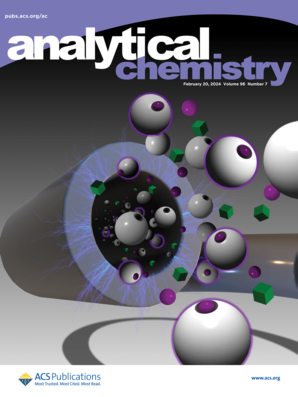A Carbonyl-Trapping Mechanism-Based Automatic Mining (CTM-AM) Strategy for Accelerating the Discovery of Natural Products with Anti-Advanced Glycation End Products Activity
IF 6.7
1区 化学
Q1 CHEMISTRY, ANALYTICAL
引用次数: 0
Abstract
The abnormal accumulation of reactive dicarbonyl compounds, such as methylglyoxal, was a major trigger for the formation of advanced glycation end products (AGEs), which are closely associated with various diseases, including diabetic complications. Natural products are considered potentially effective candidates for preventing AGE formation. Given the complexity of natural resources, efficient tools for identifying natural AGE inhibitors in mixtures remain lacking. In this study, a carbonyl-trapping mechanism-based automatic mining (CTM-AM) strategy was developed, enabling the rapid identification of anti-AGE compounds from natural resources through liquid chromatography–high-resolution mass spectrometry (LC-HRMS) analysis. This workflow is based on the characteristics of the carbonyl-trapping reaction to identify the active peaks of candidate compounds, and subsequently applies the approach to 48 medicinal plant extracts. Structural annotation yielded 171 high-confidence active compounds, spanning 20 classes of natural products and encompassing a diverse array of reactive functional groups. The results demonstrated that this workflow enables the efficient identification of diverse carbonyl-trapping active compounds and their products in complex natural resources. This study provides an effective method and comprehensive information for discovering natural AGE inhibitors while also advancing the framework for mining bioactive compounds guided by reaction mechanisms.

基于羰基捕获机制的自动挖掘(CTM-AM)策略加速发现具有抗晚期糖基化终产物活性的天然产物
活性二羰基化合物(如甲基乙二醛)的异常积累是晚期糖基化终产物(AGEs)形成的主要触发因素,AGEs与包括糖尿病并发症在内的各种疾病密切相关。天然产物被认为是预防AGE形成的潜在有效候选物。鉴于自然资源的复杂性,仍然缺乏识别混合物中天然AGE抑制剂的有效工具。在本研究中,开发了一种基于羰基捕获机制的自动挖掘(CTM-AM)策略,通过液相色谱-高分辨率质谱(LC-HRMS)分析,可以快速鉴定自然资源中的抗age化合物。该工作流程基于羰基捕获反应的特征来识别候选化合物的活性峰,并随后将该方法应用于48种药用植物提取物。结构注释得到171个高可信度的活性化合物,涵盖20类天然产物,并包含多种活性官能团。结果表明,该工作流程能够在复杂的自然资源中有效地鉴定各种羰基捕获活性化合物及其产物。该研究为发现天然AGE抑制剂提供了有效的方法和全面的信息,同时也推进了以反应机制为导向的生物活性化合物挖掘框架。
本文章由计算机程序翻译,如有差异,请以英文原文为准。
求助全文
约1分钟内获得全文
求助全文
来源期刊

Analytical Chemistry
化学-分析化学
CiteScore
12.10
自引率
12.20%
发文量
1949
审稿时长
1.4 months
期刊介绍:
Analytical Chemistry, a peer-reviewed research journal, focuses on disseminating new and original knowledge across all branches of analytical chemistry. Fundamental articles may explore general principles of chemical measurement science and need not directly address existing or potential analytical methodology. They can be entirely theoretical or report experimental results. Contributions may cover various phases of analytical operations, including sampling, bioanalysis, electrochemistry, mass spectrometry, microscale and nanoscale systems, environmental analysis, separations, spectroscopy, chemical reactions and selectivity, instrumentation, imaging, surface analysis, and data processing. Papers discussing known analytical methods should present a significant, original application of the method, a notable improvement, or results on an important analyte.
 求助内容:
求助内容: 应助结果提醒方式:
应助结果提醒方式:


